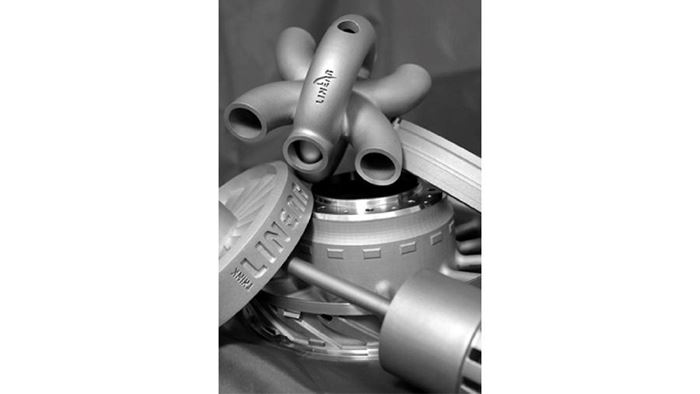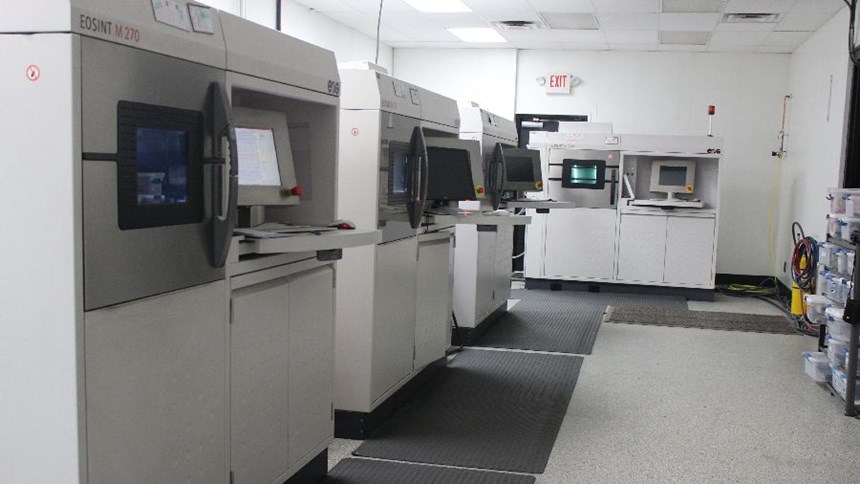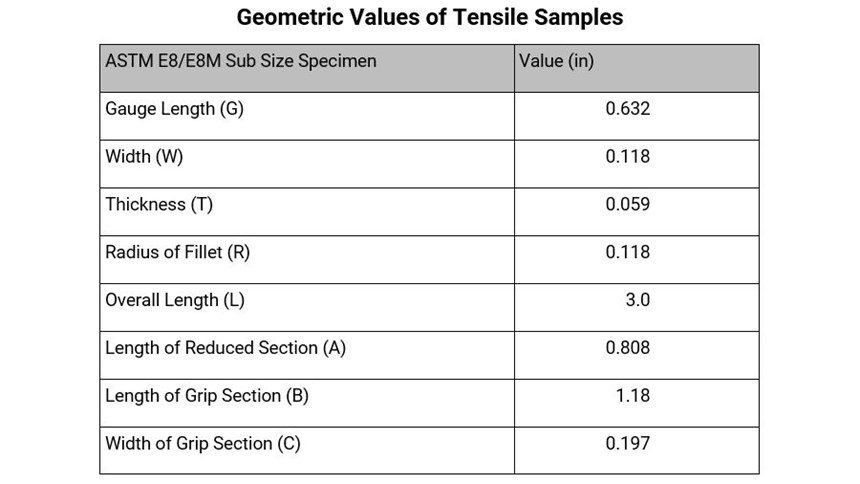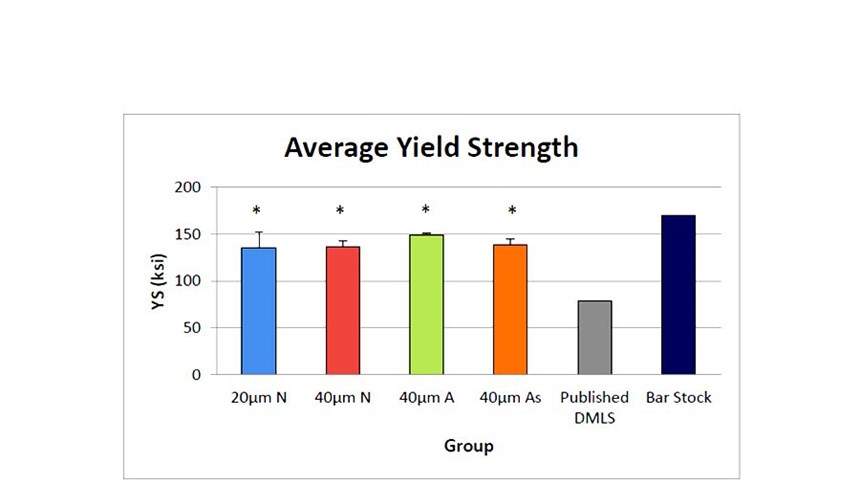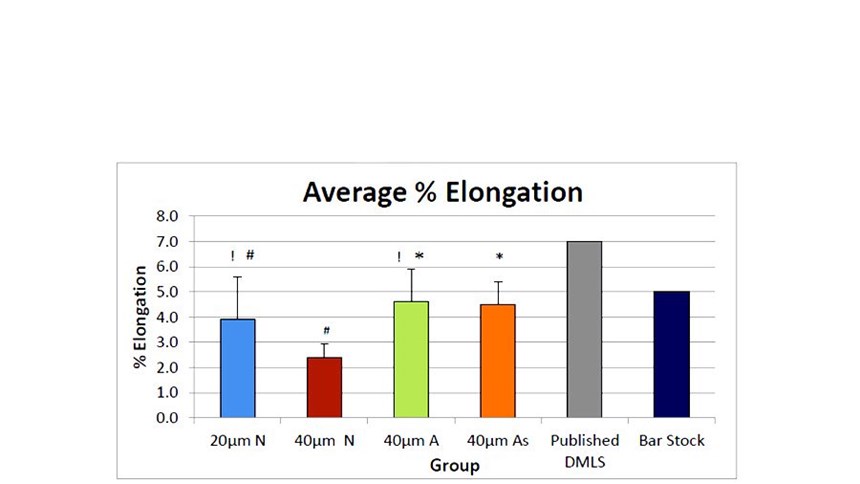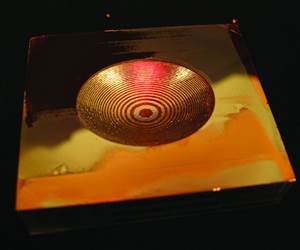New Research Advancing Additive Manufacturing Viability
New research shows that 3D-printed parts are similar to barstock and have high manufacturing repeatability.
Additive manufacturing in the form of direct metal laser sintering (DMLS), also known as direct metal laser melting (DMLM), is an extremely useful alternative to conventional manufacturing techniques. Building parts from metal powder frees designs from many engineering constraints and is often faster and more cost-competitive than machining them out of ingots or castings. But are the parts as good?
Studying variations in build orientation, layer thickness and build chamber atmospheres for 17-4PH stainless steel parts reveals little difference in material properties between 3D-printed and conventionally made metal parts, yet notable increases in DMLS process efficiencies.
Background
Direct metal laser sintering emerged in 1995 from EOS of Munich, Germany. The process starts by depositing a thin layer of powdered metal onto a build platform with a recoating arm that acts like a rake. Next, a laser precisely melts the metal powder that makes up the part’s geometry for that layer. The laser provides enough energy to bring the metal powder to a liquid state, and it is allowed to re-solidify before the next layer is recoated and welded. These steps repeat sequentially until a complete part emerges. Because the technology uses a “ground-up” building technique, DMLS has the ability to create complex geometries and internal structures impossible for machining or casting.
Many factors go into processing parts through DMLS and little is known about the effect of varying parameters on material properties. The 17-4PH stainless steel grade is a versatile material used in many major industries, so advancing research on this material is extremely important. Previous 17-4PH studies focused on general material properties using standard parameters specified by machine manufacturers. Few studies have been done concentrating on parameter variations such as layer thickness, build atmosphere and build orientation.
This study was conducted to explore the effects that these variations have on material properties. Increased understanding will aid in advancing processing parameters for the material and can therefore be extrapolated for research on other materials.
Material Specs and Characterization
Stainless steel powder for this study was acquired from powder material supplier LPW (Pittsburgh, Pennsylvania) with product specification UK 2089 and UK 2207. (The chemical composition for both materials is given in Table 1 in the slideshow above.) Linear Mold & Engineering (Livonia, Michigan) provided space and equipment for this research. Due to the nature of the DMLM process, the majority of material within the machine during a build can be sieved and reused in later builds. Reclaiming and combining multiple lots of powder is common practice at Linear in order to reduce downtime because of powder quantity limitations. Chemical composition and size characterization of 10 randomized material samples were examined prior to the build.
Experimental Groups and Processing
One hundred and twenty reduced-size tensile samples (see Table 2) were built utilizing EOS DMLS technology with four process parameters that represent micron layer (20 or 40 µm) and inert gas atmosphere (nitrogen or argon). For each process parameter, samples were built in one of three orientations relative to the build platform (0°, 45° or 90°). Groups (n=10) for each process parameter and build orientation configuration were built and tested. Each sample was labeled according to group process parameter and build orientation, as shown in Table 3.
Mechanical Testing
The specimens were built using EOS M270 and EOS M280 direct metal laser sintering machines. They were then stress-relieved at Linear, and solution heat-treated and age-hardened to H900 specifications at Vac-Met (Warren, Michigan), a certified postprocessing company, in order to accurately replicate real-world material applications. A parts list was used to track the parts and record data throughout the experiment.
The parts were tested on Lawrence Technological University’s Instron Electropuls10000 electromechanical testing equipment in combination with a video extensometer to precisely measure load and displacement. Each specimen group was marked with reflective tape and painted to add contrast for proper function of the video extensometer during testing. Values were recorded automatically as well as manually throughout the test. Each subgroup’s data was represented on a single graph to visually relate the consistency of one specimen to the next. The recorded data allowed for accurate calculation of the values in question: ultimate tensile strength (UTS), yield strength (YS) and percent elongation.
Fracture Surface Analysis
Following the mechanical testing, fracture surfaces were analyzed using Lawrence Technological University’s FEI ESEM. Specimen one of each 0˚ and 90˚ group was analyzed in order to determine fracture mechanism in addition to any noticeable irregularities between groups and subgroups.
Results
The study results and methods for determining them are detailed below. See Figures 3 through 5 in the slideshow above for additional detail.
Mechanical Testing
Mechanical testing showed results of very low variability between groups and within groups represented as low standard deviations. These values were compared by orientation within groups and between process parameter groups. Mechanical properties were expressed as means ± standard deviation for each group and subgroup. Differences in mechanical properties UTS, YS and percent elongation were determined by two-way analyses of variance (ANOVAs) with Tukey pairwise comparison posttests. Differences with P > 0.005 confidence were reported as significant.
Ultimate tensile strength of all groups showed a slight decrease in magnitude with respect to an increase in build orientation angle. (See Figure 3.) This, however, wasn’t the case in the 20 µm N group where specimens built at 45˚ proved to have the greatest magnitude. Overall, ultimate tensile strength between the 20 µm N, 40 µm A and 40 µm A with build stoppage groups were statistically identical. Ultimate tensile strength of DMLS parts was shown to be similar to that of published DMLS and barstock values.
Yield strength of all groups showed little relationship between build orientation and process parameter. (See Figure 4.) Most noticeable variations between orientations can be observed in the 20 µm N group. No statistical difference can be observed between groups based off a two-way ANOVA. Yield strength values proved to be greater than published DMLS values and similar to published barstock values.
No correlation between percent elongation and build orientation could be observed. Some variability between samples is shown as large standard deviations and can be attributed to the method of manual measurement of percentage elongation values. No statistical difference between the 20 µm N, 40 µm A and 40 µm groups can be observed based off of a two-way ANOVA.
Fracture Surface and Powder Characterization
Fracture surfaces were compared to determine any difference in fracture mechanism between build orientations. The two extremes of build orientations were determined to be 0˚ and 90˚. Overall, uniformity of fracture surface was present in the study.
No noticeable changes in fracture surface were observed with a change in build orientation or process parameter. All samples showed transverse, dimpled fracture. Little observed porosity and no un-melted powder can be observed in the fracture region. This indicates that the process provided enough energy density for the powder to achieve full melt within the sample.
SEM imaging was analyzed to determine the morphology of the powder. Overall, powder morphology was uniform within the study. Observed samples show that an even distribution of particle size and shape can be expected during processing of reclaimed 17-4PH stainless steel. Powder particles ranged from 10 to 50 µm, indicating that proper material-handling protocols are in place at Linear Mold & Engineering.
Conclusion
In this study, parts produced through DMLS showed very similar mechanical properties to those made through traditional manufacturing methods. Furthermore, build orientation had little to no effect on mechanical properties within groups and between groups. In addition to the elimination of many common design constraints, DMLS shows highly repeatable results of varied build orientation and process parameters.
Moreover, mechanical properties between the 20 µm N, 40 µm A and 40 µm As with build stoppage groups showed no statistical difference. Due to the nature of the DMLS process, building parts at a higher micron layer greatly reduced exposure time due to a lower number of exposure and recoating cycles, ultimately decreasing lead times and increasing machine efficiency. Further studies on the microstructure and modulus of 40 µm A samples should be done to validate and improve 17-4PH process parameters.
DMLS overall shows high repeatability in addition to mechanical properties comparable to those of traditional manufacturing methods; therefore, DMLS does offer a viable alternative to traditional manufacturing methods.
Acknowledgements
The authors would like to thank all who contributed to the success of this project including John Tenbusch and Chuck White of Linear Mold & Engineering Inc.; Yawen Li and Nabil Grace of Lawrence Technological University; and Wayne Terwilliger of Vac-Met.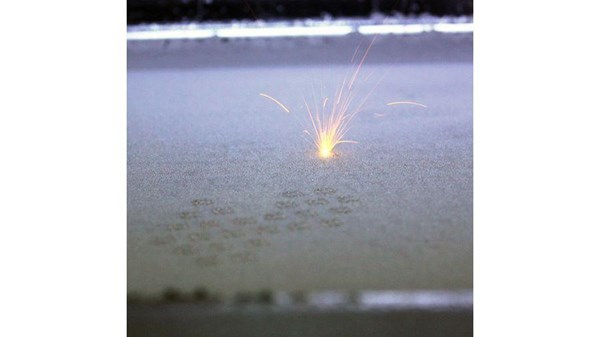
Related Content
How to Build 10,000+ Shot Molds in Hours
Rapid tooling isn’t so rapid when it takes days to 3D print a metal mold, and then you still must machine it to reach the necessary tolerances. With Nexa3D’s polymer process you can print a mold in hours that is prototype or production ready and can last for more than 10,000 shots.
Read MoreAM 101: What is Ultrasonic Additive Manufacturing?
Going from additive to subtractive can be simple with Ultrasonic Additive Manufacturing (UAM). What is it and how does it work? Learn the basics in this 101 post.
Read More3D Printed Cold Plate for an Electric Race Car: The Cool Parts Show #51
An unconventional lattice design and biomimicry are key to the performance of this fluid-cooled heat exchanger for a battery-powered race car.
Read MoreAM 101: What Is Binder Jetting? (Includes Video)
Binder jetting requires no support structures, is accurate and repeatable, and is said to eliminate dimensional distortion problems common in some high-heat 3D technologies. Here is a look at how binder jetting works and its benefits for additive manufacturing.
Read MoreRead Next
Hybrid Additive Manufacturing Machine Tools Continue to Make Gains (Includes Video)
The hybrid machine tool is an idea that continues to advance. Two important developments of recent years expand the possibilities for this platform.
Read More3D Printing Brings Sustainability, Accessibility to Glass Manufacturing
Australian startup Maple Glass Printing has developed a process for extruding glass into artwork, lab implements and architectural elements. Along the way, the company has also found more efficient ways of recycling this material.
Read MoreAt General Atomics, Do Unmanned Aerial Systems Reveal the Future of Aircraft Manufacturing?
The maker of the Predator and SkyGuardian remote aircraft can implement additive manufacturing more rapidly and widely than the makers of other types of planes. The role of 3D printing in current and future UAS components hints at how far AM can go to save cost and time in aircraft production and design.
Read More
